Discover 10 animals in Coronado National Forest, tips & photos from our hikes included.
Embark on a wild journey with us as we weave through the diverse landscapes of Coronado National Forest, where the real locals wear fur, feathers, and scales!
This isn’t just any nature walk; it’s a full-on treasure hunt for the forest’s most captivating inhabitants, with each step unveiling a new character in this living drama.
From the elusive mountain lion to the sociable black-tailed prairie dog, our hikes through these woods turned into an impromptu safari.
We’ll even spill some tried-and-true tips to increase your chances of spotting these amazing creatures on your own adventures!
Mountain lions
There are many mountain lions in Coronado National Forest. We saw one on our hike and it was a beautiful sight.

Mountain lion sightings in Coronado National Forest are becoming increasingly common. The Arizona Game and Fish Department states that the animals are established residents of the area.
In 2013, a mountain lion was sighted near Cave Creek in the Santa Catalina Mountains within the Coronado National Forest. According to The Arizona Daily Star, there have been numerous mountain lion sightings around Cochise County and over 30 confirmed mountain lion cases in the Coronado National Forest.
In 2017, there was an exciting trail cam photograph of a mother mountain lion with 3 healthy cubs!
Arizona Woodpecker
The first animal we saw on our hike was an Arizona woodpecker! We were so excited to see this beautiful bird up close. It was fascinating to watch it peck at the tree trunks and listen to its distinctive call. We also saw some other birds during our hike, but the woodpecker was definitely the highlight!
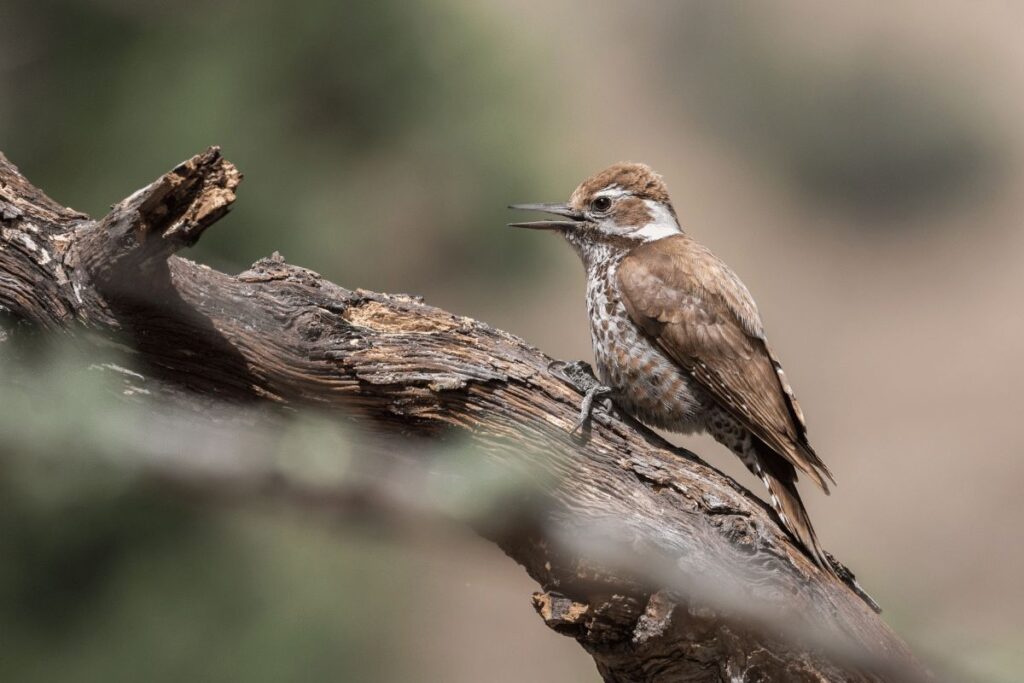
It lives in the higher elevations of the mountainous region, often perching on dead branches and hunting insects. The woodpecker has brown and black plumage with white stripes down its sides and a long bill. Its distinctive call can be heard echoing through the forest even from far away distances.
White-tailed deer
The Coronado National Forest is home to a wide variety of wildlife, including the white-tailed deer. These deer are relatively small, with adults averaging between 90 and 130 pounds. They are most active at dawn and dusk, and can be seen grazing in open meadows or forests. If you’re lucky, you might even spot a doe with her fawn!
White-tailed deer are an important part of the Coronado National Forest’s ecosystem, providing food for predators such as mountain lions and bobcats. When alarmed, they will raise their long tails and take off running, which is why they’re called “white-tails.”
Montezuma quail
If you love getting outdoors and enjoying all that nature has to offer, then a visit to Coronado National Forest is a must! Located in southern Arizona, this forest is home to a variety of different wildlife, including the Montezuma quail.
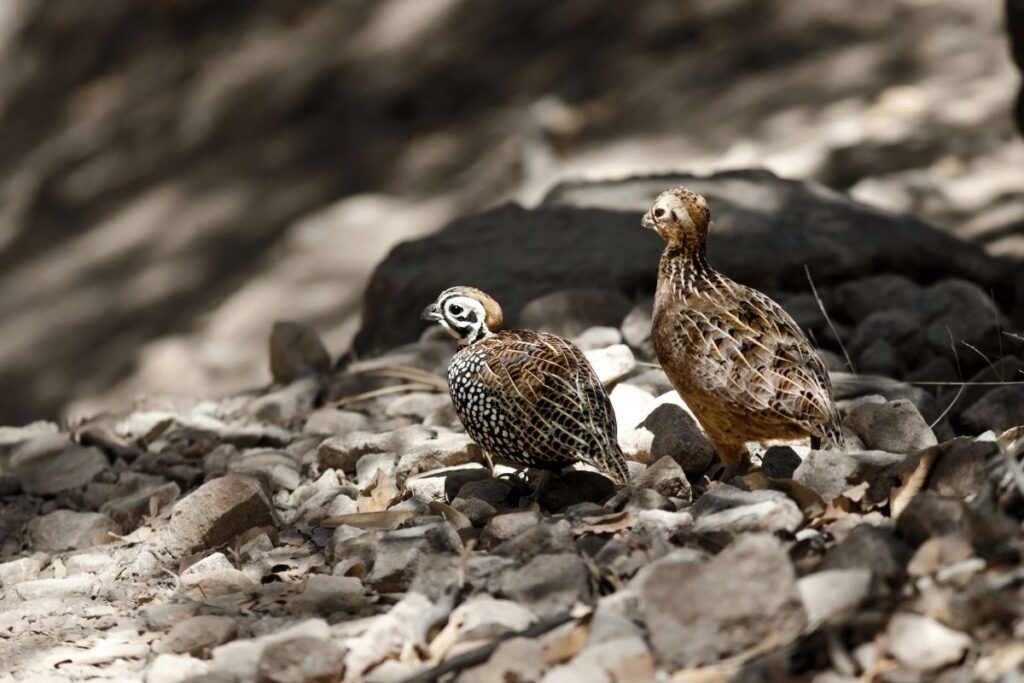
These shy birds are usually found in pairs or small groups, and make their homes in areas with dense vegetation. Although they’re not the easiest animals to spot if you keep your eyes peeled you may just be lucky enough to catch a glimpse of one on your next hike!
If you’re interested in seeing a Montezuma quail, be sure to bring along your binoculars and keep a watchful eye out for them as you explore the forest. While it’s not guaranteed that you’ll spot one, with patience and perseverance you just might get lucky!
Whiskered screech owls
Whiskered screech owls are a type of owl that live in the Coronado National Forest. They are nocturnal, meaning they are most active at night. During the day, they roost in trees or on the ground. These owls eat small mammals, such as mice and voles.
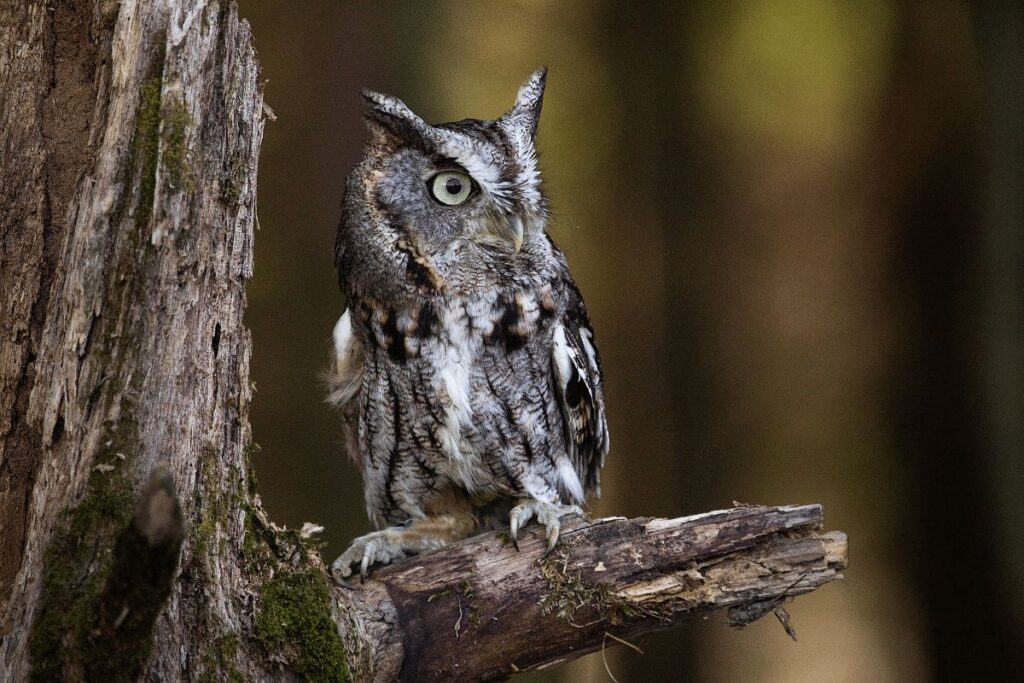
hey also eat insects, such as moths and beetles. Whiskered screech owls have tufts of feathers on their heads that look like whiskers, hence their name.
These owls are relatively small, with a wingspan of only about two feet. They are brown or gray in color, with some white streaks on their chests.
Cottontail rabbits
Coronado National Forest is home to a variety of wild animals, including cottontail rabbits. We spotted several of these little creatures during our hike through the forest and they were absolutely adorable!
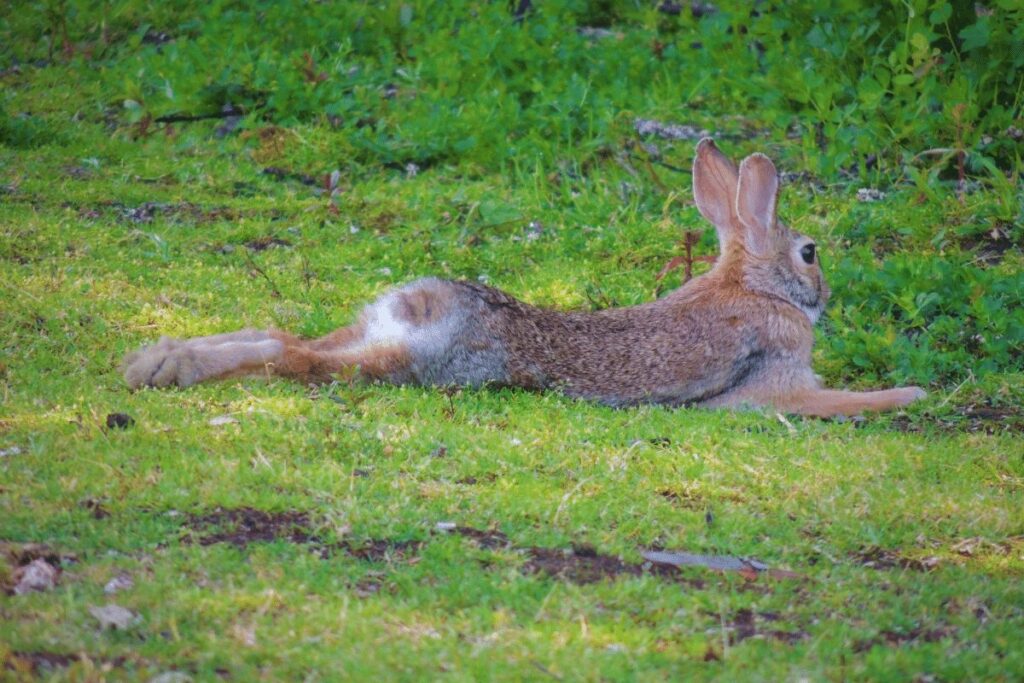
Cottontail rabbits are relatively small rabbits with brown fur and white tail tips (hence the name “cottontail”). They are found throughout North America and are common in many types of habitats, including forests like Coronado National Forest.
These rabbits are herbivores and their diet consists mainly of grasses, herbs, and other vegetation. If you’re lucky enough to spot a cottontail rabbit in the wild, be sure to take some time to appreciate this cute little animal!
Coatimundi
We were so excited to see a coatimundi on our hike through Coronado National Forest! This was by far the most exotic animal we had seen all day. The coatimundi is a member of the raccoon family and is native to Central and South America.
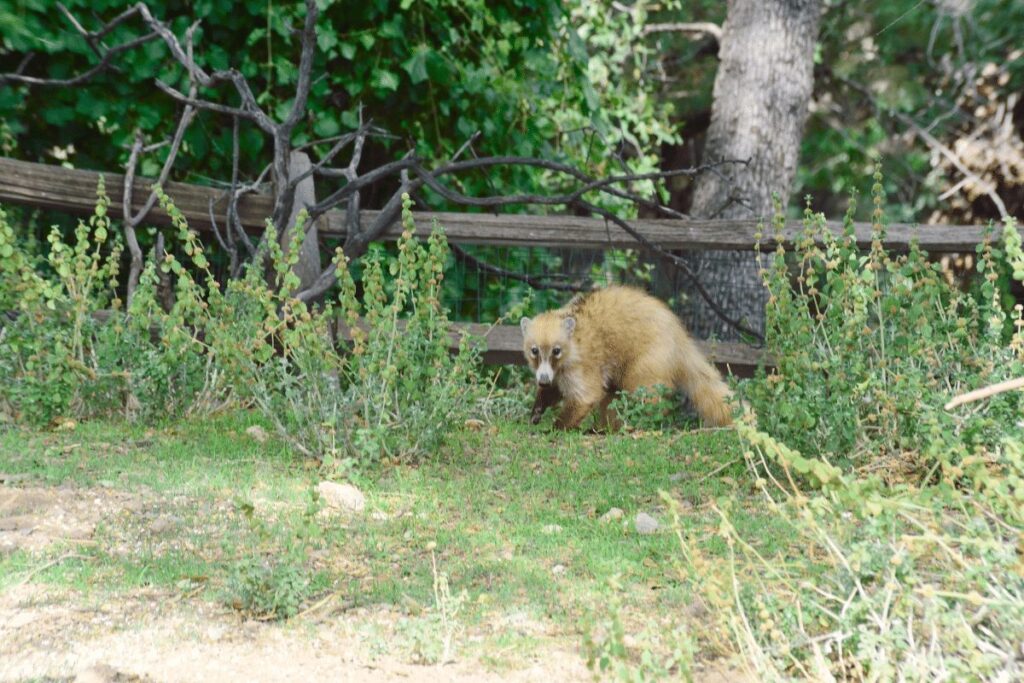
They are opportunistic feeders and will eat just about anything, which makes them fairly easy to spot in the wild. We were lucky enough to see one rummaging through a trash can near the trailhead.
He was very skittish and ran away as soon as he noticed us, so we didn’t get too close. It was definitely a memorable experience to be so close to such an amazing wild animal in its natural habitat!
Javelina
Javelinas are native to desert regions and prefer open grasslands, chaparral, and wooded hillsides. They eat fruits, seeds, roots, and cactus pads, as well as insects, small reptiles, and other small animals.
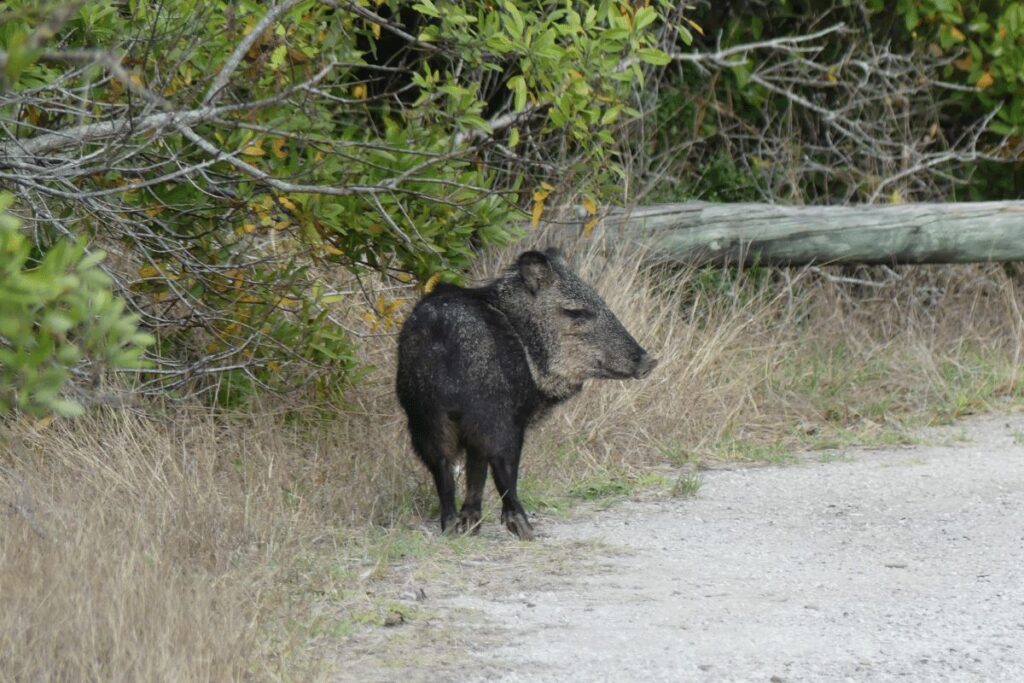
Javelinas have sharp tusks that they use for defense against predators. They are social animals who live in large groups known as “sounders” or “herds.”
Javelinas can often be seen in Coronado National Forest during the cooler months of winter and spring. It is important to remember to give these animals their space – they are wild animals after all! Enjoy watching them from a safe distance if you come across a herd while out on the trails.
Whiptail lizard
The whiptail lizard is a small, quick reptile native to the southwestern United States. They are named for their long, whip-like tails. Whiptail lizards are predators, and their diet consists mainly of insects. They are also known to eat other lizards, including their own species.
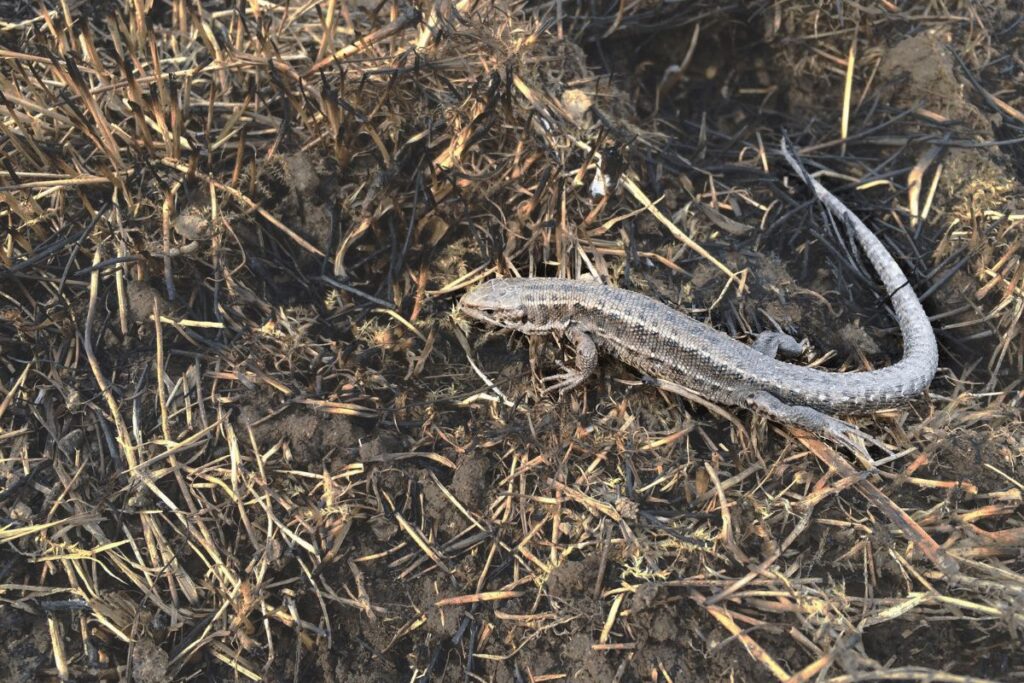
Whiptail lizards are shy but curious creatures. They are often seen running through the underbrush or basking in the sun on rocks. When they feel threatened, they will flick their tails as a warning to potential predators.
These lizards are fast runners and excellent climbers. They can also drop their tails as a defense mechanism if they are grabbed by a predator. The tail will eventually grow back, but it will be shorter than the original.
Whiptails lizards are an important part of the ecosystem in Coronado National Forest. They help control insect populations and play a role in the food chain. These reptiles are a fascinating part of the natural world, and we were lucky to see one on our hike!
Gila monster
The Gila monster is a large, venomous lizard that is native to the deserts of the southwestern United States and northwestern Mexico. It is the only species in the genus Heloderma and the family Helodermatidae.
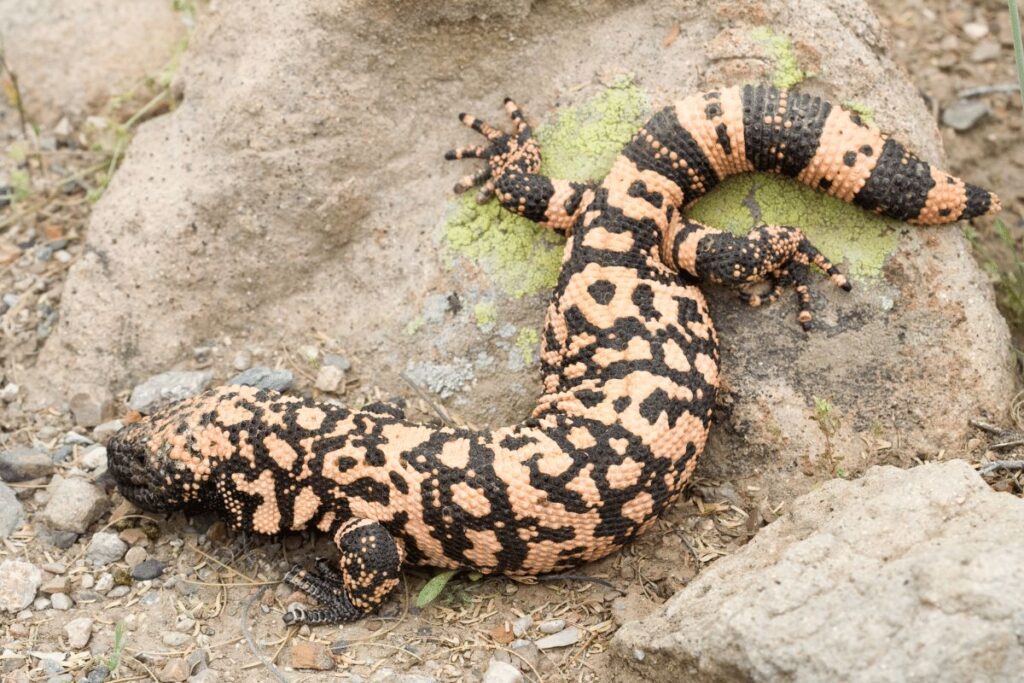
Though the Gila monster is venomous, it is not considered dangerous to humans because its fangs are relatively short and it rarely bites people.
The Gila monster grows to an average length of 36 inches (91 cm), with a maximum length of 60 inches (152 cm). It is heavy-bodied and slow-moving, with a stubby tail.
The back and sides are covered with dark gray or black beads on a light yellow or orange background. The belly is usually pale yellow or orange. Females are generally larger than males.
Gila monsters inhabit dry, arid ecosystems such as deserts, scrublands, and woodlands. They burrow underground to escape the heat of the day and emerge at night to hunt for food.
Their diet consists mainly of eggs and small mammals, but they will also eat lizards, birds, amphibians, snakes, and carrion.
Gila monsters mate in late spring or early summer. Females lay 2-6 eggs in July or August, which hatch after incubating for 70-80 days. Hatchlings are about 8 inches (20 cm) long and resemble adults in coloration and patterning. They reach sexual maturity at 3-4 years of age
Black-tailed prairie dogs
The black-tailed prairie dog is a species found in the western United States, specifically in the states of Colorado, New Mexico, Texas, Wyoming, Montana, and North Dakota. They get their name from the black hair on their tails. Prairie dogs are members of the squirrel family and are herbivores. Their diet consists mostly of grasses and other plants.
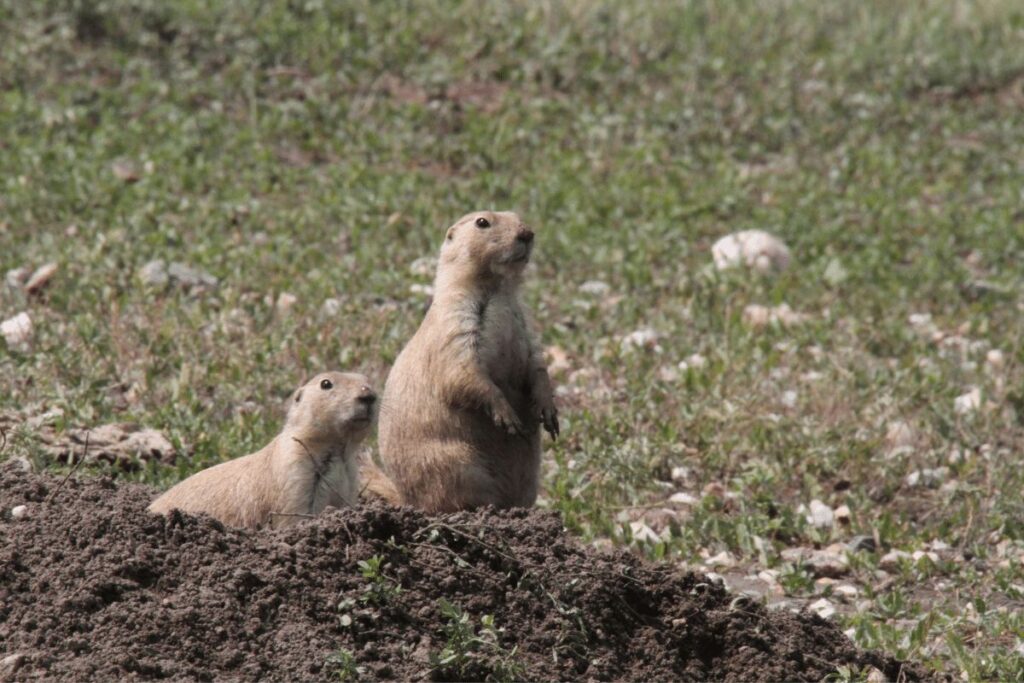
Prairie dogs live in colonies or “towns” that can cover large areas of land. These towns consist of many interconnected burrows where the prairie dogs live. Burrows can be up to 6 feet deep and have many different chambers for different purposes, such as sleeping, storing food, or raising young.
Prairie dogs are very social animals and live in close-knit families made up of a few adult females, their young offspring, and one adult male. Males leave their natal colony when they reach sexual maturity at around 1-2 years old to establish their own colony.
Prairie dogs are important animals in their ecosystem because they create homes for many other animals such as burrowing owls, snakes, and foxes. They also help aerate and fertilize the soil with their digging activities which benefit the plants that grow there.
Pro Wildlife Viewing Tips in the Coronado National Forest!
Seeing wildlife in Coronado National Forest can be a thrilling experience, as the area is rich with a variety of species. Here are 10 tips for wildlife watching, including trails and areas you may want to focus on:
- Know the Wildlife: Before you go, research the types of wildlife that are commonly found in Coronado National Forest. This can include black bears, deer, Mexican spotted owls, and a variety of reptiles and birds. Knowing what you might see can help you be prepared to spot them.
- Visit at Dawn or Dusk: Wildlife is most active during the cooler parts of the day. Early morning and late afternoon or early evening are the best times to see animals as they are out for feeding.
- Move Quietly and Patiently: Animals are easily startled by loud noises or quick movements. Walk gently, avoid talking loudly, and be patient. Sometimes you need to stay still and silent for a while before wildlife appears.
- Stay on the Trails: By using established trails, you are less likely to disturb the natural habitat. Trails like the Crest Trail or the Huachuca Mountains trails are known for their birdwatching opportunities. The trails in Madera Canyon are also excellent for spotting a variety of wildlife.
- Use Binoculars or a Telephoto Lens: To avoid getting too close and scaring wildlife away, bring a pair of binoculars or a camera with a telephoto lens to observe from a distance.
- Be Aware of Seasons: The time of year can greatly affect what animals you might see. For example, bird migrations in spring and fall can be a prime time for birdwatching, while other animals might be more visible during their mating seasons.
- Look for Signs: Even if you don’t see animals directly, you can look for signs of their presence, such as tracks, scat, or disturbed vegetation. This can increase your chances of spotting them eventually.
- Keep a Safe Distance: If you do encounter wildlife, it’s crucial to keep a safe distance. Not only is this safer for you, but it’s also less stressful for the animals.
- Stay Near Water Sources: Animals need water daily, so trails and areas near streams, rivers, and lakes are hotspots for wildlife activity. In Coronado National Forest, areas like Ramsey Canyon Preserve offer excellent opportunities for viewing wildlife near water.
- Respect the Habitat: Stick to Leave No Trace principles to keep the habitat pristine for wildlife. Don’t feed animals, and carry out all trash to keep the ecosystem healthy and reduce the risk of negative encounters.
Remember that wildlife watching can often be a matter of luck and timing, but preparation and respect for the animals and their environment can greatly increase your chances of a successful wildlife experience.
Conclusion
Exploring the Coronado National Forest was an amazing and unique experience. Not only did we get to appreciate nature in its raw state, but we were also able to observe a plethora of wild animals living within the park’s boundaries.
From rabbits and lizards to snakes, our hike through the forest was truly exhilarating! We hope that this article has inspired you to take a hike of your own so you can discover all the magnificent wildlife living in Coronado National Forest as well!
